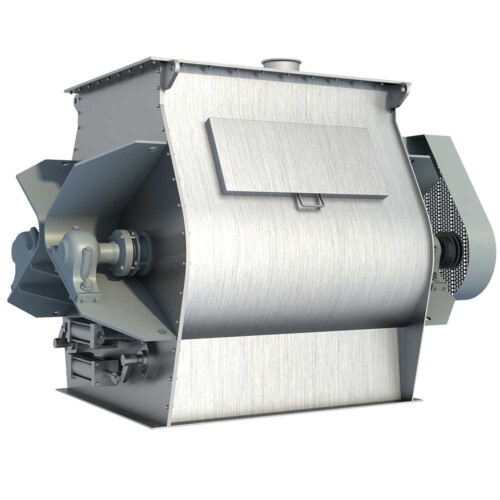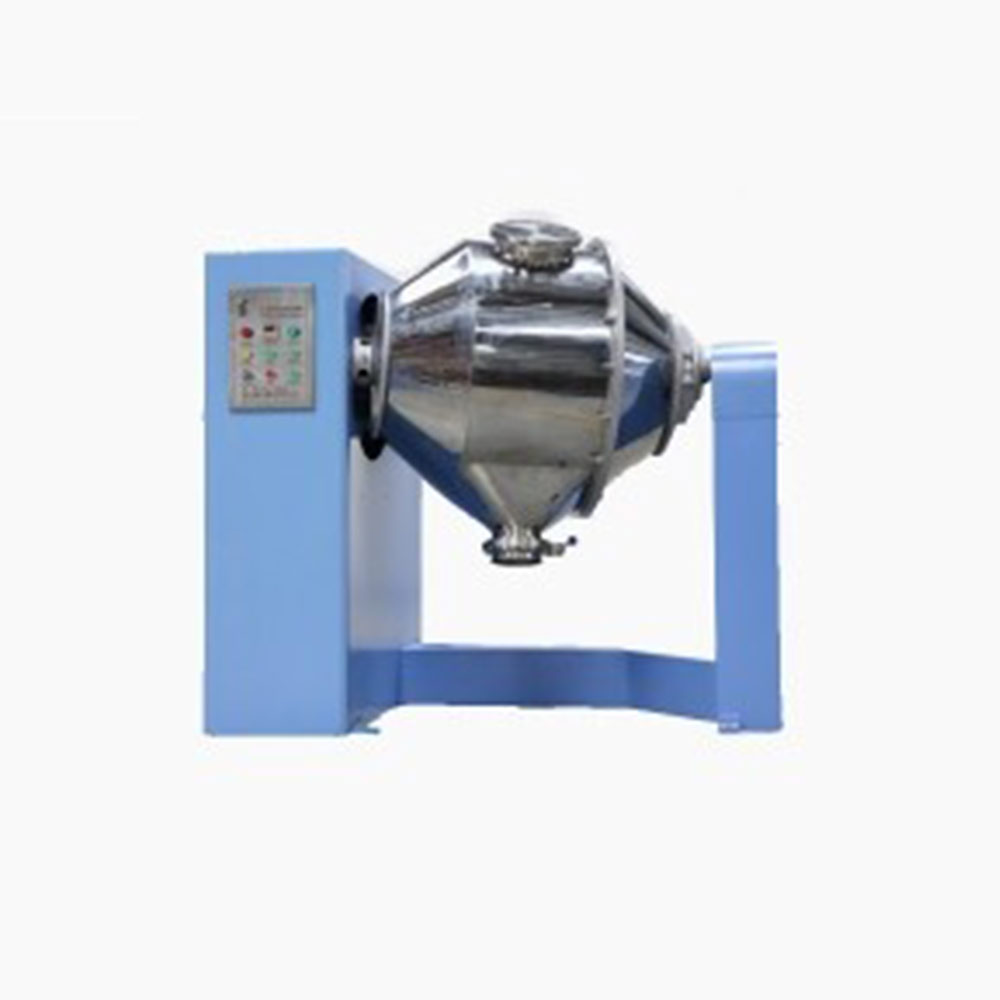Ask An Expert
Frequently Asked Questions
Yes, We can supply simple stand alone panels or automated PLC controlled systems. We normally install and test all controls on our mixers before they are shipped.
Yes, we normally test the mixers before they are shipped and mark out the wire need to connect on the control box.
We manufacture specialty mixing equipment for powder & bulk materials. Included are ribbon blender, plough mixer, conical screw mixer, twin shaft paddle mixer, V blender, double cone blender and other auxiliary equipment such as screw conveyor, quantitive auger filler.
We sell across the world, our cusotmers distribute 5 continents.
Share Us With Your Network
Continuous Mixing for Large Capacity Output
There are two types of mixer divided into batch mixer and continuous mixer. In continuous mixing, material flows steadily from an upstream process into the mixer, is retained in the mixing vessel for a specified mixing time, and discharges at the same flow rate for downstream handling. For some applications, continuous mixing has distinct advantages over batch mixing. For example, for higher processing capacities, continuous mixers are more compact than batch mixers. The applications, advantages, disadvantages of continuous mixing operation are detailed in the following sections.
Continuous mixing is used to mix ingredients continuously in a mixer in a single pass. In a continuous mixing process, the weighing, loading, mixing, and discharge steps occur continuously and simultaneously. The materials to be mixed are continuously charged into the mixer as per the formulation. The process of charging the material in a continuous mixer is extremely critical and can significantly affect the quality of the final mix. Radial and axial mixing takes place as the material travels from the feeding point to the discharge point. The time taken by the material to travel from the feeding point to the discharge point is known as the retention time of the material in the mixer. Unlike batch mixers where product retention time is carefully controlled, with continuous mixers, material retention time is not uniform and can be directly affected by mixer speed, feed rate, mixer geometry, and the design of mixer internals. Material is continuously discharged at a constant rate which is generally termed as the capacity of the continuous mixer. This capacity is measured in kg/hr of mixed product. To keep track of the mix quality, a well defined sampling and material testing procedure is to be defined and observed.
While, how to calculate an accurate capacity of continuous mixer? We could look following calculation:
For example:
Capacity: 50ton/hour
Product: Slag, Cement etc.
Bulk density of material: 1.2kg/l
Residence time in mixer: 50 second
Filling coefficient: 50%
Calculus:
41600(50ton/1.2)x50/3600×50%
2080000/1800 = 1155 liter
So, the total volume of continuous mixer could be 1200L. But for safety consideration, we could add 1.5 coefficient and get 1800L total volume.
Continuous Mixers & Mixing Systems
The construction of continuous mixers requires that the charging of materials is from one end of the mixer and discharge from the opposite end. Adequate residence time within the mixer is required for homogenous mixing of the material. This is achieved through controlled movement of material from the feeding point to the discharge point. This movement is caused because of the rotation of mixer vessel. Material handling equipment and instruments like feeders, rotary valves, belt scales, etc. are provided at the feeding point of the mixers.
Applications of Continuous Mixing
Continuous mixing is preferred for applications where:
- Large quantities of a single product are to be mixed.
- In a continuous process line requiring high production rate.
- Strict batch integrity is not critical.
- Smoothing out batch product variations is required.
Advantages of Continuous Mixing
The advantages of the continuous mixing operation, continuous mixer is as follows:
- High Capacity: Compared to batch type mixers, continuous mixers of smaller volumes and power can be used to produce large quantities of uniform mix. Hence for a given capacity they are more compact than batch mixers.
- Lower Mixing Time: The residence time in continuous mixers is lower than in batch mixers.
- Consistent Mixing Performance: With proper feeding arrangements, online instrumentation and operation controls, a consistent mixing performance and uniform product quality can be achieved.
- Suitability for Automatic Control: Operation of continuous mixers can be automated using online monitoring and measuring instruments.
- Minimum Segregation: Continuous mixers can reduce and control segregation of products as they can be located in proximity of the next processing station.
- Lower Cost of Mixers: Continuous mixers tend to be cheaper than the equivalent batch mixers because they are compact and require less space. However the cost of feeders for metering the product into the mixer, instrumentation and control may result in a higher overall cost of the system.
- Minimum Labor: Since material feeding and discharging processes are automated, minimal labor is required for continuous mixing.
Which Mixers can be designed in continuous mixer:
- Ribbon Blender
- Ploughshare Mixer
- Paddle Mixer
Continuous mixers are generally dedicated to a single high volume product. It can be designed for capacities as high as 500 Tons/hour. Even though continuous mixing is gaining popularity, selection of continuous mixers is much more complicated than batch mixers.
Ask An Expert



















